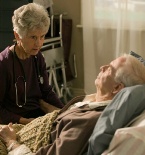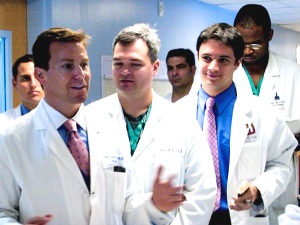Leadership qualities for a patient-safety turnaround
In recent years, Parkland Memorial Hospital in Dallas, Texas has faced intense media scrutiny and government investigations into patient safety lapses. As the hospital searches for a new CEO, the Dallas Morning News asked me and other experts to answer the question: "What kind of leader does Parkland need to emerge as a stronger public hospital?" Below is the column, re-used with the newspaper’s permission. While it is focused on one hospital, the themes apply broadly. The type of leader that I describe is needed throughout health care.
Parkland rebuilding ‘at the speed of trust’
Public hospitals such as Parkland are a public trust, serving the community's health needs by providing safe and effective care to a population that lacks alternatives.
Major shortcomings in the quality of care provided at Parkland have eroded that trust. Now trust must be restored. The community is counting on it. It's literally a matter of life and death.
Parkland's board is searching for a new CEO to lead this journey. The CEO's task will not be easy: Resources are tight, resident supervision is insufficient, staff morale is low, systems need updating, and preventable harm is far too common.
History may provide some guidance. Historian Rufus Fears notes that great leaders - leaders who changed the world - have four attributes: a bedrock of values, a clear moral compass, a compelling vision and the ability to inspire others to make the vision happen. Parkland needs one of these great leaders.
The key values of the next CEO should be humility, courage and love -- and these values must guide the leader's behavior. Parkland will not be able to improve unless it acknowledges its shortcomings; this will take humility. Yet Parkland is a great organization with a rich past and bright future. The leader must honor the past and look forward. The leader must be able to live with the paradox of being humble yet confident.Read More »Leadership qualities for a patient-safety turnaround
 One of my colleagues, Nancy, recently shared a surprising experience that she had with her son—one of four children—as she was getting ready to send him off to college. The night before he left, this strapping, six-foot-tall man, who plays football and lacrosse, made an unusual request: He asked his mom to tuck him in to bed. When he returned home for a long weekend, he again wanted to be tucked in.
One of my colleagues, Nancy, recently shared a surprising experience that she had with her son—one of four children—as she was getting ready to send him off to college. The night before he left, this strapping, six-foot-tall man, who plays football and lacrosse, made an unusual request: He asked his mom to tuck him in to bed. When he returned home for a long weekend, he again wanted to be tucked in. Some of the best ideas for improving health care come from outside our field. For example, we’ve adapted cockpit-style checklists from aviation to improve teamwork and communication on our clinical teams. We’ve turned to performance improvement methods from manufacturing to reduce waste and defects in care delivery.
Some of the best ideas for improving health care come from outside our field. For example, we’ve adapted cockpit-style checklists from aviation to improve teamwork and communication on our clinical teams. We’ve turned to performance improvement methods from manufacturing to reduce waste and defects in care delivery. I recently cared for Ms. K, an elderly black woman who had been sitting in the intensive care unit for more than a month. She was, frail, weak and intermittently delirious, with a hopeful smile. She had a big problem: She had undergone an esophagectomy at an outside hospital and suffered a horrible complication, leading her to be transferred to The Johns Hopkins Hospital. Ms. K had a large hole in her posterior trachea, far too large to directly fix, extending from her vocal cords to where her trachea splits into right and left bronchus. She had a trachea tube so she can breathe, and her esophagus was tied off high in her throat so oral secretions containing bacteria did not fall through the hole and infect her heart and lungs. It is unclear if she will survive, and the costs of her medical care will be in the millions.
I recently cared for Ms. K, an elderly black woman who had been sitting in the intensive care unit for more than a month. She was, frail, weak and intermittently delirious, with a hopeful smile. She had a big problem: She had undergone an esophagectomy at an outside hospital and suffered a horrible complication, leading her to be transferred to The Johns Hopkins Hospital. Ms. K had a large hole in her posterior trachea, far too large to directly fix, extending from her vocal cords to where her trachea splits into right and left bronchus. She had a trachea tube so she can breathe, and her esophagus was tied off high in her throat so oral secretions containing bacteria did not fall through the hole and infect her heart and lungs. It is unclear if she will survive, and the costs of her medical care will be in the millions.